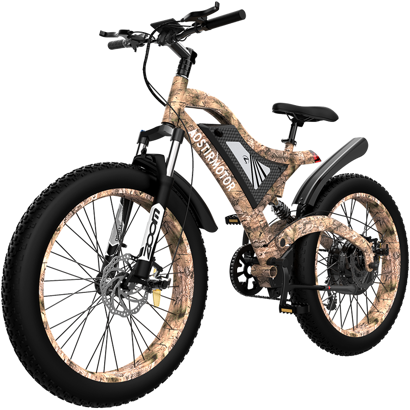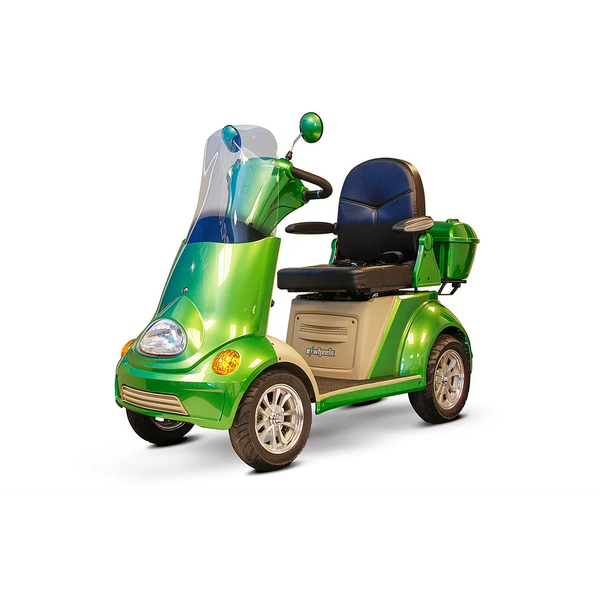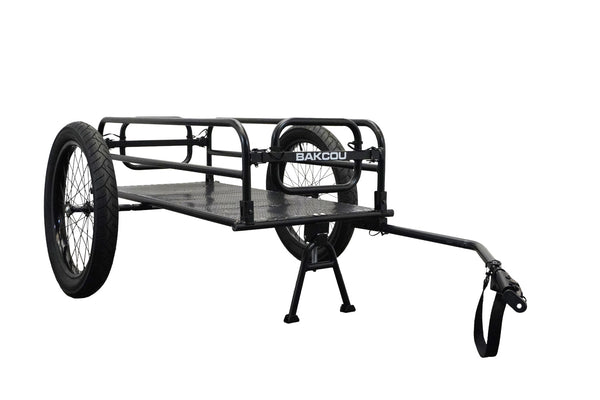


BEST ELECTRIC BIKE BUYERS GUIDE FOR 2022
What is an electric bike or Ebike?
An electric bike – often known as an e-bike – is basically a motor-assisted ride. Generally, they are a combination of a conventional bike with a battery and a motor, which takes some of the efforts out of pedaling. Like the ebike below.

Emojo Panther Pro 48V 500W Fat Tire Electric Bike
How to choose or decide which eBike to buy?
Ebikes are getting more popular and is indeed a great alternative for transportation. There are so many choices and sometimes confusing in selecting the right ebike. At electricbikeplus.com, we’ve made it easy for you by only selling top quality eBikes at the guaranteed lowest price, with FREE Shipping to Lower 48 States, Low Monthly Financing Option and No Sales Tax!
There are a variety of reasons why you might want some pedaling assistance in your life. Perhaps you have to travel with lots of cargo, and the added power can mean the difference between using a car or still spinning your two legs. Or maybe you want to start commuting to work, and an electric hybrid could be a great option for helping you cover the miles, without turning up at work in a sweaty state. You might be recovering from injury or illness and the added boost of a motor might help you get back out there again. Or it might simply be the case that you’re not as young as you once were.
Hilly cities and rough terrain, extended commutes, knee or joint pain: these can all be deterrents to enjoying cycling. But because they’re as low endurance as you need them to be, e-bikes are a great transportation option for everyone, including seniors and those with physical restrictions who might find regular cycling excursions difficult. City commuters will enjoy the option of employing supplemental power when tired or sore or on the way back from the grocery store loaded down with bags of fresh veggies, as well as the luxury of avoiding heavy city traffic and costly parking fees. Out-of-town travelers can downsize certain foldable models for placement in the trunk of a car or RV storage compartment, and pull them out again easily to explore the ins and outs of destinations. No matter what your abilities or everyday entail, ebiking offers a fun way to get in exercise, get around, or simply enjoy the sights and sounds of your favorite city.
The real advantages of e-bikes are climbing efficiency, wind resistance, and better range. If you experience knee pain or exercise induced asthma for example - electric bikes can breathe new life into the sport of cycling. They might convince your partner, kids or parents to join you for a ride, or they might enable you to arrive at work feeling fresh. Electric bicycles offer the same great benefits as traditional bicycles, including cost efficiency, health benefits, and connection to a community.
Now that we know why we should get one, it’s time to choose the right one! See our collections and one of the best selling hunting bike we carry, BAKCOU ebike Mule.

BAKCOU Mule 750W-1000W Electric Hunting Bike
Where do you want to go?
Electric bikes are designed for different people and different purposes. There are so many models, so first you should figure out where you’re going to be riding your e-bike most frequently. Electric bicycles are as diverse as the people riding them. eBikes are designed with different purposes in mind. For example - commuting to work, trail riding or downhill mountain biking, cruising around town or the beach, riding in sand or snow (fat tire), touring, folding eBikes that stow away easily and more. Almost all types of eBikes can be used for multiple purposes, so think about how you will be using your eBike most often and choose one that best serves your needs.
E-bikes are geared toward different kinds of activities, such as cargo hauling, relaxed cruising, trail riding, mountain biking, downhill, child transportation, road biking, sand and snow (fat tire) riding, traveling and urban commuting. The question you need to ask yourself before entering a store is what your preferred playground is going to be, or you can opt for a portable folding bike that you can easily carry at the trunk of a car (see below).


Emojo Caddy Pro 48V/15.6Ah 500W Fat Tire Electric Trike
Throttle vs. Pedal-Assist
Electric bikes can be operated just like manual bicycles, as well as power-driven by a throttle or with the help of a pedal-assist system (PAS) that lends riders added force to push through that extra mile or incline. Throttle control models mirror motorcycle operation in that a simple twist of the wrist activates acceleration that helps you control your movement and speed. With bikes that employ a pedal-assist system, a torque sensor picks up and pushes out motor power once you start pedaling and stays activated until you stop this lightly applied movement.
What does torque mean?
Torque is the force of energy that causes rotation, so ebike torque will refer to how easily wheels will spin. To optimize efficiency and save motor power, torque should be as high as possible. An electric bike will balance the torque created by your pedaling with that exerted by the motor, supplementing only what is needed to achieve desired speeds.

Checkout The BAKCOU Mule ST 26" 21Ah 1000W Electric Hunting Bike
Does the bike recharge the motor while you pedal?
Most ebike technology does not support recharging while the bicycle is in use. The energy savings, if ebikes were able to produce power at the same time as it is being depleted, would be minimal, and the strain on the motor would make your ride inefficient and difficult. On some hub motor ebikes and those with regen motors, it is possible to recharge the batteries from pedaling but only when you are moving at a speed faster than the motor can attain itself. These models are significantly more costly and in most cases, it's rare that you would actually achieve speed greater than the unloaded speed of the motor for any length of time. Hub motor kits are sold independently and can be fashioned to select ebike models.

What kind of drive?
There are two mains types of electric bikes. The most common is what has come to be called a “pedelec”. This type of system monitors the rider’s pedaling and automatically adds a certain amount of motor assistance – usually depending upon rate, force, and speed. In most countries, the output of the motor is regulated and limited to 250 W, and the maximum speed up to 30 km/h. When you reach this speed, the motor automatically switches off. The regulations differ in every country, so it’s important to ask in your local shop for details. Then there’s the other type called a ‘twist-n-go’. This is where a switch is used by the rider to trigger the assistance from the motor.
Motor mount
When it comes to motors, there are two main types. Either it’s mounted in one of the wheels (hub motor assist) or it’s mounted at the crank and pedal area (crank motor assist), at the bottom of the frame. That means the electronic controls can include a sensor that detects how hard you’re pedaling and can measure out the assistance accordingly. Typically, crank-assisted bikes have a reputation for doing well on steep hills but can be a little on the noisy side, depending upon the brand and type. Hub motors tend to be very quiet, but often don’t handle hills as well as crank assist systems. Generally, it would be best if you look for a brand with a good reputation, such as Bosch, Yamaha, Shimano, Bafang, or 8fun.


Check Out The BAKCOU STORM G2 750W & 1000W Fat Tire Full Suspension Electric Hunting Bike
Battery
Lithium-ion batteries are everywhere, so it’s no surprise to find them powering e-bikes. More expensive e-bikes have higher-tech batteries that are lighter, charge quickly, and last longer. Unfortunately, batteries degrade over time, holding less charge as they age. The quality of the battery makes a difference, so look for a reputably named battery and make sure the warranty covers the battery for at least two years. Lithium-ion batteries are typically said to last 800 full charge cycles. That’s about three years of weekday commuting. They survive longer with careful use, so you should get at least 2,000 half-charge cycles. Those are pessimistic estimates though, in practice, battery life of several years is quite easily achievable. A full charge typically takes between two and a half to six hours, depending on the manufacturer, battery capacity, and battery chemistry.

What is the range on a single charge?
The distance an e-bike will go on one charge of the battery is called range. It’s probably the most important specification. If your commute involves a big hill, for example, you don’t want to run out of juice halfway up. Without power, an e-bike is just a heavy bike. The range depends on the battery capacity, the speed, your weight, profile of the commuting tour, the assistance level you choose and the percentage of given pedaling power. If you’re only going to do ten kilometers of daily commuting, you don’t need a 70 km range. Nevertheless, you should buy a bike with a higher range than you necessarily need because the range will drop as the battery ages and loses capacity.
The range of electric bike batteries can vary depending on how much assistance you provide as well as the type of terrain you are traversing – hilly areas with a lot of steep inclines will eat up motor power much faster than flat surfaces, while pedal-assist bikes achieve more range than throttle-controlled models due to the rider being required to pedal at all times. Other factors that can strain batteries include rider weight, wind and road conditions. Nevertheless, most riders are able to achieve 30-120km per charge.

How long does it take to charge batteries?
Battery charge times vary between manufacturers, models, and battery types, but a typical charge can be counted on as taking between 4-8 hours to complete. Higher quality batteries like Li-Ion and NiMH will be faster to charge, while sealed lead-acid (SLA) batteries will take 6-8 hours. Initial charges of any type may take up to 12 full hours. Battery types will also determine the general lifespan of your power source.
|
Battery Lifespan |
|
|
Lithium Ion (Li-Ion) batteries |
approximately 700-1000+ charges |
|
Nickel Metal Hydride (NiMH) batteries |
about 500-700 charges |
|
Sealed lead acid (SLA) batteries |
between 300-500 charges |
To extend the life of your battery, charge it up regularly and promptly after each use. If you store your ebike for prolonged periods of time, both the batteries and charger should be stored at temperatures above freezing and recharged every 4 weeks. The longer a battery sits uncharged, the faster the life will be reduced and batteries left uncharged for more than 4 weeks will go into sleep mode and potentially void warranty.


Checkout The Revi Bikes Cheetah Cafe Racer Fat Tire Electric Bike
Costs
Good e-bikes are not cheap, even compared to good unassisted bikes. You can pick up a very basic model, but how long are you going to be happy with it? An average bike with a quality frame, functional brakes, suspension and other components is expensive. When buying an e-bike you have to spend considerably more money on the motor. So don’t be surprised by the higher price, a better bike lasts much longer.


Checkout The Revi Bikes Predator Electric Mountain Bike
Do electric bikes have an impact on the environment?
Comparative to cars, the environmental impact of riding an ebike is fractional. When the impact from batteries and electricity is figured in to compare ebikes with mechanical models, however, factors such as a person’s increased food consumption from riding a conventional bicycle must be considered, making the complete life-cycle analysis difficult to complete. In some assessments the differences are obvious: if you usually drive to and from work and replace this habit with riding an electric bicycle, you are saving exponentially on money and effect on the environment.
Can I ride my bicycle in the rain or snow?
Most e-bikes are water and weatherproof, although they’re not made to be outright submerged. If you plan to ride relatively frequently in heavy downpours, you can take extra precautions to make your ebike watertight, such as sealing connectors and exposed openings with clear silicone.























